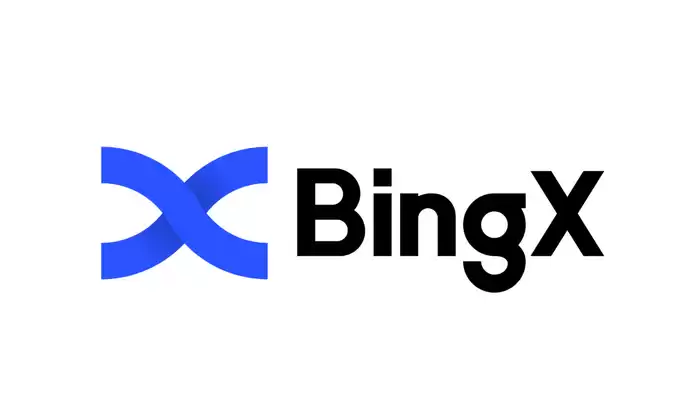-
 Bitcoin
Bitcoin $118300
0.52% -
 Ethereum
Ethereum $4541
1.94% -
 XRP
XRP $3.126
-0.88% -
 Tether USDt
Tether USDt $1.000
-0.04% -
 BNB
BNB $862.3
3.21% -
 Solana
Solana $192.7
2.37% -
 USDC
USDC $0.9999
0.00% -
 Dogecoin
Dogecoin $0.2337
-0.45% -
 Cardano
Cardano $0.9547
0.21% -
 TRON
TRON $0.3518
-0.76% -
 Chainlink
Chainlink $24.56
12.38% -
 Hyperliquid
Hyperliquid $47.56
0.55% -
 Stellar
Stellar $0.4311
-0.42% -
 Sui
Sui $3.816
1.91% -
 Bitcoin Cash
Bitcoin Cash $589.6
-0.53% -
 Ethena USDe
Ethena USDe $1.001
0.00% -
 Hedera
Hedera $0.2556
1.43% -
 Avalanche
Avalanche $24.75
3.13% -
 Litecoin
Litecoin $122.0
2.66% -
 Toncoin
Toncoin $3.488
-0.17% -
 UNUS SED LEO
UNUS SED LEO $9.454
-1.21% -
 Shiba Inu
Shiba Inu $0.00001317
0.95% -
 Uniswap
Uniswap $11.17
1.80% -
 Polkadot
Polkadot $4.053
2.26% -
 Dai
Dai $0.9999
-0.02% -
 Bitget Token
Bitget Token $4.698
1.81% -
 Cronos
Cronos $0.1530
1.57% -
 Monero
Monero $265.8
10.83% -
 Ethena
Ethena $0.7333
1.63% -
 Pepe
Pepe $0.00001122
2.74%
How to play BingX BTC contract
Engaging in BingX BTC contract trading empowers traders to potentially magnify their returns on Bitcoin investments through a financially sophisticated vehicle.
Nov 24, 2024 at 04:18 pm

A Comprehensive Guide to Mastering BingX BTC Contract Trading
Introduction
BingX BTC contract is a sophisticated financial instrument that empowers traders to leverage their Bitcoin (BTC) investments and potentially amplify their returns. However, navigating the intricacies of BTC contract trading requires a thorough understanding of the underlying concepts and techniques. This comprehensive guide will provide a step-by-step roadmap for mastering BingX BTC contract trading, empowering you to make informed decisions and unlock the full potential of this dynamic market.
Step 1: Understanding BTC Contract Fundamentals
1.1. What is a BTC Contract?
A BTC contract is a derivative instrument that derives its value from the underlying asset, Bitcoin (BTC). It provides traders with a contractually binding agreement to buy or sell a specified amount of BTC at a predetermined price and time in the future.
1.2. Key Characteristics of BTC Contracts:
- Leveraged Trading: BTC contracts allow traders to leverage their positions, potentially amplifying their profits but also their risks.
- Expiring Contracts: BTC contracts have a predetermined expiration date, after which they settle either physically or in cash.
- Mark Price: BingX BTC contracts use a dynamic "Mark Price" system to calculate the current value of an open position based on market conditions and liquidity.
Step 2: Registering on BingX and Funding Your Account
2.1. Registering on BingX:
Visit the official BingX website and create an account providing the necessary personal information and verification documents.
2.2. Funding Your Account:
Transfer BTC to your BingX wallet by selecting "Deposit" from the dashboard and following the on-screen instructions. Alternative deposit methods, such as credit cards or stablecoins, may also be available.
Step 3: Choosing the Right Trading Mode
BingX offers two primary trading modes for BTC contracts:
- Cross Margin Mode: All assets in your spot, futures, and margin accounts can be used as collateral to support your trading positions. The potential for losses is capped at your account balance.
- Isolated Margin Mode: Each trading position has its own isolated margin account. Losses are capped at the amount of margin allocated to that specific position.
Step 4: Placing a BTC Contract Order
4.1. Understanding Order Types:
- Limit Order: Executes at a specified price or better.
- Market Order: Executes at the best available market price.
- Conditional Order: Executes only when a specified condition is met.
4.2. Placing an Order:
Identify the BTC contract you wish to trade, select an order type, specify the price, and adjust the leverage to your desired level. Click "Buy" or "Sell" to place the order.
Step 5: Managing Your BTC Contract Position
5.1. Position Monitoring:
Regularly monitor the performance of your open BTC contract positions by viewing their current value, profit/loss, and margin utilization.
5.2. Stop-Loss and Take-Profit Orders:
Set stop-loss orders to limit potential losses and take-profit orders to secure realized gains. Remember to adjust these orders as market conditions change.
5.3. Margin Management:
Ensure your margin balance remains at an optimal level to avoid liquidation and maintain the stability of your positions. Adjust your leverage and add additional margin as needed.
Step 6: Closing Your BTC Contract Position
6.1. Reverse the Order:
To close a BTC contract position, simply place an order that offsets your existing position (i.e., buy to close a sell position, or vice versa).
6.2. Settlement Date:
Recall that BTC contracts have a designated expiration date. If you hold a position until expiration, it will be settled either physically (receiving or delivering BTC) or in cash (receiving or paying the difference in value).
Step 7: Advanced Trading Techniques
7.1. Grid Trading:
Grid trading involves creating a series of buy and sell limits within a specified price range to capture small, recurring profits.
7.2. Scalping:
Scalping is a rapid trading strategy that focuses on capturing small profits from short-term price fluctuations in the market.
7.3. Arbitrage Trading:
Arbitrage trading involves exploiting price discrepancies in different markets to lock in risk-free profits, often using BTC contracts.
Conclusion
Mastering BingX BTC contract trading requires a deep understanding of the underlying concepts, proper execution of trading strategies, and disciplined risk management practices. By following the comprehensive steps outlined in this guide, you equip yourself with the knowledge and skills necessary to navigate the complexities of BTC contract trading, potentially generating substantial returns while effectively mitigating risks. Remember to approach trading rationally, manage your positions diligently, and constantly refine your strategies based on market conditions and your own trading experience.
Disclaimer:info@kdj.com
The information provided is not trading advice. kdj.com does not assume any responsibility for any investments made based on the information provided in this article. Cryptocurrencies are highly volatile and it is highly recommended that you invest with caution after thorough research!
If you believe that the content used on this website infringes your copyright, please contact us immediately (info@kdj.com) and we will delete it promptly.
- Kazakhstan's Crypto Leap: Bitcoin ETF and Central Asia's Digital Finance Future
- 2025-08-13 12:45:19
- BlockDAG Presale Blazes Past $371M: Fundraising Frenzy Fuels Crypto Sensation
- 2025-08-13 13:05:21
- Meme Coins: Chasing the 2025 Surge – Which Will Moonshot?
- 2025-08-13 10:25:23
- Bitcoin's Wild Ride: Rally, Pullback, and What's Next
- 2025-08-13 10:25:23
- Bitcoin, Bitmax, and Institutional Demand: A New Era of Crypto Investment
- 2025-08-13 10:45:12
- Solana, ROAM, and Airdrops: What's the Buzz in 2025?
- 2025-08-13 11:35:13
Related knowledge

Is it possible to adjust the leverage on an open position on KuCoin?
Aug 09,2025 at 08:21pm
Understanding Leverage in KuCoin Futures TradingLeverage in KuCoin Futures allows traders to amplify their exposure to price movements by borrowing fu...

What cryptocurrencies are supported as collateral on KuCoin Futures?
Aug 11,2025 at 04:21am
Overview of KuCoin Futures and Collateral MechanismKuCoin Futures is a derivatives trading platform that allows users to trade perpetual and delivery ...

What is the difference between realized and unrealized PNL on KuCoin?
Aug 09,2025 at 01:49am
Understanding Realized and Unrealized PNL on KuCoinWhen trading on KuCoin, especially in futures and perpetual contracts, understanding the distinctio...

What different order types are available to use on KuCoin Futures?
Aug 13,2025 at 11:35am
Understanding Order Types on KuCoin FuturesKuCoin Futures offers a comprehensive range of order types to accommodate different trading strategies and ...

How does KuCoin Futures compare against Binance Futures in terms of features?
Aug 09,2025 at 03:22am
Trading Interface and User ExperienceThe trading interface is a critical component when comparing KuCoin Futures and Binance Futures, as it directly i...

How can I manage risk when applying high leverage on KuCoin?
Aug 13,2025 at 11:35am
Understanding High Leverage and Its Implications on KuCoinHigh leverage in cryptocurrency trading allows users to control larger positions with a rela...

Is it possible to adjust the leverage on an open position on KuCoin?
Aug 09,2025 at 08:21pm
Understanding Leverage in KuCoin Futures TradingLeverage in KuCoin Futures allows traders to amplify their exposure to price movements by borrowing fu...

What cryptocurrencies are supported as collateral on KuCoin Futures?
Aug 11,2025 at 04:21am
Overview of KuCoin Futures and Collateral MechanismKuCoin Futures is a derivatives trading platform that allows users to trade perpetual and delivery ...

What is the difference between realized and unrealized PNL on KuCoin?
Aug 09,2025 at 01:49am
Understanding Realized and Unrealized PNL on KuCoinWhen trading on KuCoin, especially in futures and perpetual contracts, understanding the distinctio...

What different order types are available to use on KuCoin Futures?
Aug 13,2025 at 11:35am
Understanding Order Types on KuCoin FuturesKuCoin Futures offers a comprehensive range of order types to accommodate different trading strategies and ...

How does KuCoin Futures compare against Binance Futures in terms of features?
Aug 09,2025 at 03:22am
Trading Interface and User ExperienceThe trading interface is a critical component when comparing KuCoin Futures and Binance Futures, as it directly i...

How can I manage risk when applying high leverage on KuCoin?
Aug 13,2025 at 11:35am
Understanding High Leverage and Its Implications on KuCoinHigh leverage in cryptocurrency trading allows users to control larger positions with a rela...
See all articles

























































































